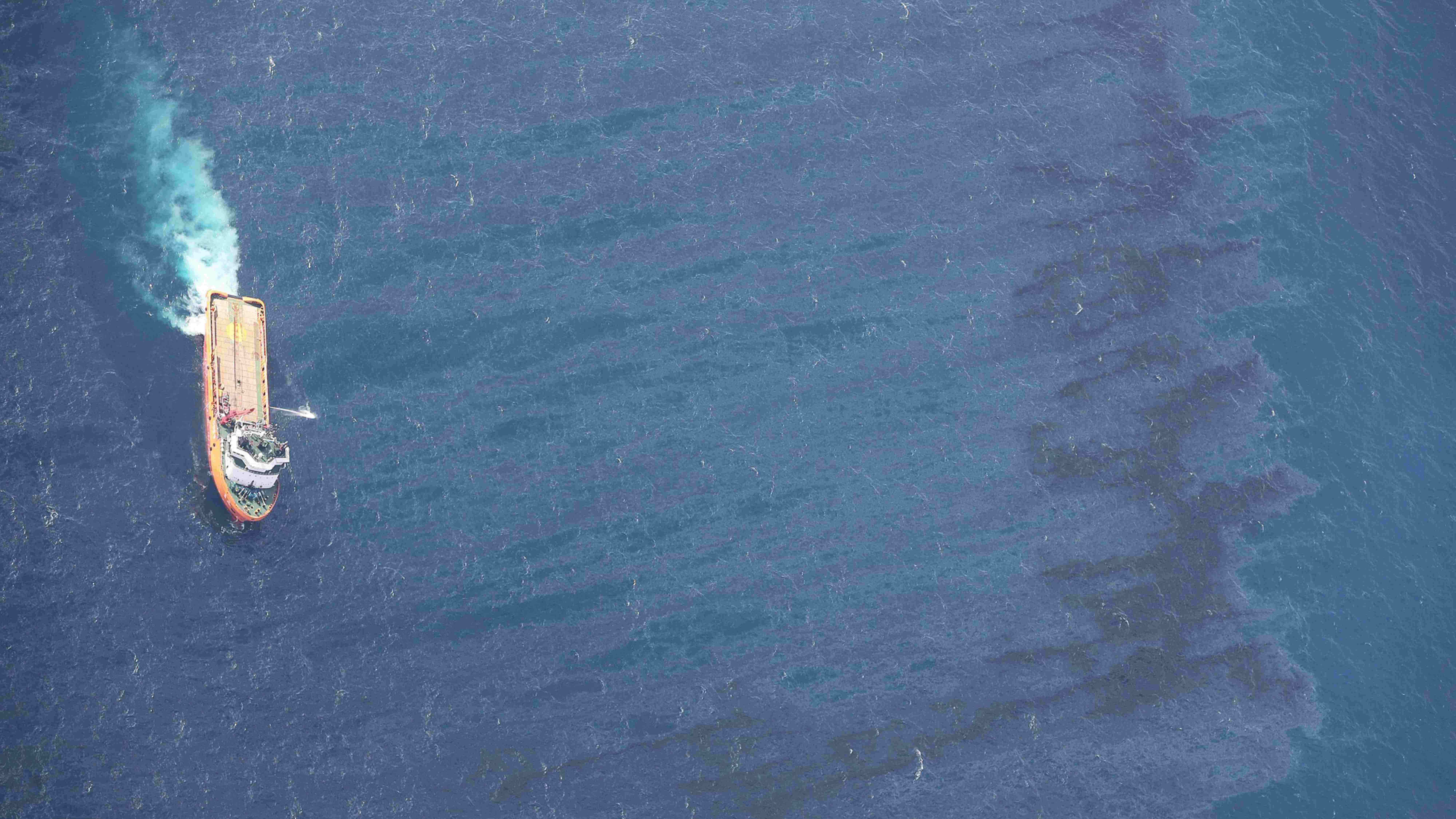
World
16:40, 17-Jan-2018
East China Sea collision aftermath: Bird's eye view of oil spill clean up
By Han Peng

Chinese rescuers said the sunken Sanchi tanker was located by Tuesday morning, and they are still sending robots to approach the vessel for further assessment. Since the collision, Chinese rescue teams have been regularly sending aircraft to the accident site to help assess the oil leak and search for the 29 missing crew members.
Our camera crew followed one of the flights. A bird's-eye view reveals the scale of the catastrophe: What was a week-long flame in the middle of the ocean has since become a scene of disaster with an oil slick, covering 133 square kilometers of one of the world’s major fishing grounds.
The spilled condensate is clearly visible from over 1,000 meters above the sea. Silver stripes are left on the surface of the water, the aftermath of the oil tanker exploding and sinking.

A rescue ship extinguishes the fire on the stricken Iranian oil tanker Sanchi in the East China Sea, Jan. 10, 2018. /VCG Photo
A rescue ship extinguishes the fire on the stricken Iranian oil tanker Sanchi in the East China Sea, Jan. 10, 2018. /VCG Photo
Unlike regular crude oil leakages, which leave thick black oil slicks, experts say condensate is more volatile but less of a pollutant. Some also warn that chemicals may enter and alter food chains and that the clean up could take decades.
"The oil leakage will pollute the habitat of marine life, but keep in mind that fish are able to swim away from the polluted area. So the leakage will impact different types of marine life differently. For example, octopuses move slower than normal fish, and may become more contaminated. But because of the complicated composition of the condensate, we still need time to fully assess its impact," said Zhou Yongdong, deputy director of Zhejiang Marine Fishery Research Institute, to CGTN.
On Tuesday, China expanded the operation by adding a professional cleaning vessel.
Now a total of 13 vessels from China, Japan and South Korea are spraying dispersants on the spilled condensate, and using absorption mats to clean up what’s left.
The collision between the Panama-registered oil tanker and a Hong Kong-registered bulk freighter occurred around 8 p.m. on Jan. 6 in waters about 160 nautical miles east of the Yangtze River estuary.
All 21 Chinese crew members on the freighter were rescued. Three bodies were recovered from the tanker, with the rest 29 still missing.

SITEMAP
Copyright © 2018 CGTN. Beijing ICP prepared NO.16065310-3
Copyright © 2018 CGTN. Beijing ICP prepared NO.16065310-3